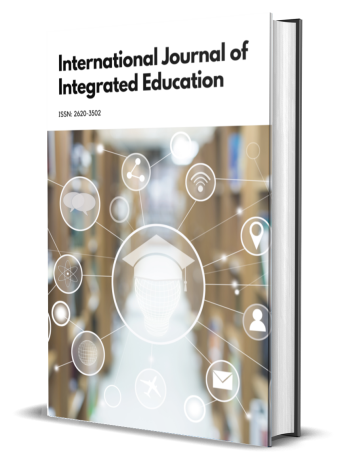Consumer environmental consciousness and brand preference in rivers state
Abstract
This study investigated consumer environmental consciousness and brand preference in Rivers State. The study sought to establish the extent to which brand sound influence repeat purchase of power generating plants, the extent to which brand heat generation influence customer referral of power generating plants and the extent which green protection determine customer loyalty of power generating plants in Rivers State.The study adopted descriptive research design. A population of 52 loyal customers of 5 different brands of power generating plants was randomly selected while 47 questionnaires were successfully retrieved for the study. Data was collected by use of questionnaire from the respondents. Three research questions were posed and three hypotheses were tested. Data were analysed using descriptive statistics (mean and standard deviation) while inferential statistics Pearson Product Moment Correlation (PPMC) was used to test the above stated hypotheses at 0.05 level of significance. The researcher utilized Cronbach's Alpha for Reliability Statistics to arrive at 0.75 coefficient reliability, Findings revealed that there is a great correlation between brand sound and customer repeat purchase of power generating plants in Rivers state, that there is a low correlation between brand heat generation and customer referral of power generating plant in Rivers State and that there is a great correlation between green protection and customer loyalty of power generating plant in Rivers State. Consumers in Rivers State should be loyal to power generating plants that emit less carbon monoxide for green house protection.
References
Aditi, M., Rameshwar, D., Omprakash, K. G.& Zongwei, L. (2017). Dynamics of environmental consciousness and green purchase behaviour: an empirical study. International Journal of Climate Change Strategies and Management. 1756-8692
Alamro, A. and Rowley, J. (2011). Antecedents of brand preference of mobile telecommunications administrations.Journal of Product & Brand Management, 20(6).
Bergman, P., Sköld, A., Västfjäll, D., & Fransson, N. (2009). Perceptual and emotional categorization of sound. Journal of the Acoustical Society of America, 126(6).
Carpenter, G.S. and Nakamoto, K. (1994). Reflections on consumer preference formation and pioneering advantage. Journal of Marketing Research, 31(4).
Chernev, A., Hamilton, R. and Gal, D. (2011). Competing for consumer identity: limits to self-expression and the perils of lifestyle branding. Journal of Marketing, 75(3).
Elijah, A. A. (2017). Theories and concepts for human behavior in environmental preservation. Journal of Environmental Science and Public Health. (1)2.
Huang, C. and Kung, F. (2011).Environmental consciousness and intellectual capital management: evidence from Taiwan’s manufacturing industry. Management Decision, (49)9
Ibimilua, F. O. & Adewale, F. I. (2014). Environmental challenges in Nigeria: Typology, Spatial Distribution, Repercussions and Way Forward. American International Journal of Social Science.3(2).
Iftekhar, Z., Arnab, T., Ali, M., Shidujaman, M. d. & Mayen, H. (2013).Consideration of Environmental Effect of Power Generation: Bangladesh Perspective Energy and Power Engineering, 1521-1525.
John, S. (2019). The rise of eco-friendly products. Retrieved from https://www.thomasnet.com/insights/the-rise-of-eco-friendly-products/. accessed on 6/8/2019.
Matthew, W. (2013). Does green management matter for donation intentions? the influence of environmental consciousness and environmental importance. Management Decision, 51(8).
Muhammad, A. H., Muhammad, F. K. & Ali, A. (2014). Green awareness effects on consumers' purchasing decision: A Case of Pakistan. Global Journal of Management and Business Research: EMarketing. (14)6.
Norazah, M. S. (2013). Green awareness effects on consumers' purchasing decision: Some Insights from Malaysia. Green Awareness Effects, IJAPS,(9)2.
Najam, Z. &Maryam, S. (2016) Factors effecting consumer brand preferences in automobile industry . Singaporean Journal of business economics, and management studies (SJBem).(5)3.
Revill, K. P., Namy, L. L., DeFife, L. C.& Nygaard, L. C. (2014). Cross-linguistic sound symbolism and cross modal correspondence: evidence from fMRI and DTI. Brain & Language, 128(1).
Rinkesh, O. (2019). What is the greenhouse effect? Retrieved from https://www.conserve-energy-future.com/greenhouseeffectcauses.php. accessed on 8/8/2019.
Reham, E., Ahmad, G., Zahir, I. & Ying F. (2016). Brand preference and repurchase intention model: the role of consumer experience. Journal of Marketing Management (32)13-14
Wilms, J.& Görmann, M. (2010). Sound engineering für elektroautos: Der Ton macht die Musik. Süddeutsche Zeitung, p. 31.
Zelezny, L.C. and Schultz, P. (2000). “Psychology of promoting environmentalism: promoting environmentalism”, Journal of Social Issues. 56(3).
In submitting the manuscript to the International Journal on Integrated Education (IJIE), the authors certify that:
- They are authorized by their co-authors to enter into these arrangements.
- The work described has not been formally published before, except in the form of an abstract or as part of a published lecture, review, thesis, or overlay journal.
- That it is not under consideration for publication elsewhere,
- The publication has been approved by the author(s) and by responsible authorities – tacitly or explicitly – of the institutes where the work has been carried out.
- They secure the right to reproduce any material that has already been published or copyrighted elsewhere.
- They agree to the following license and copyright agreement.
License and Copyright Agreement
Authors who publish with International Journal on Integrated Education (IJIE) agree to the following terms:
Authors retain copyright and grant the International Journal on Integrated Education (IJIE) right of first publication with the work simultaneously licensed under Creative Commons Attribution License (CC BY 4.0) that allows others to share the work with an acknowledgment of the work's authorship and initial publication in this journal.






1.png)
